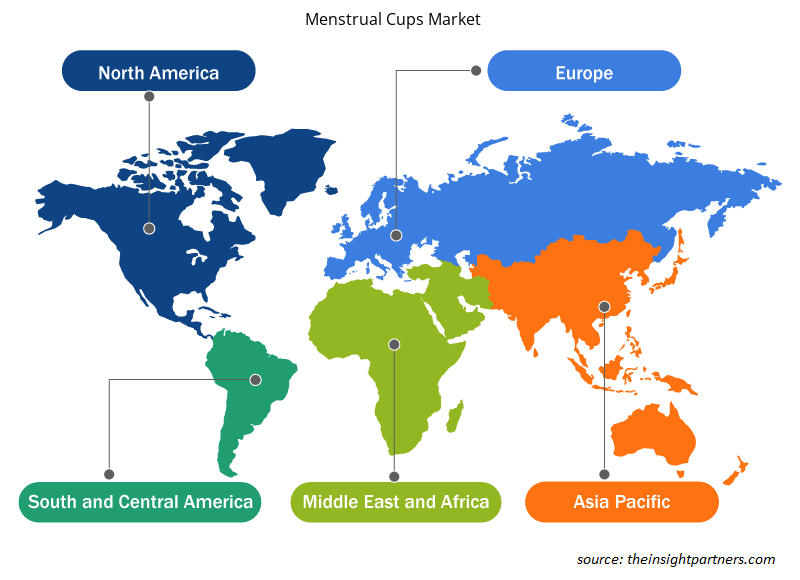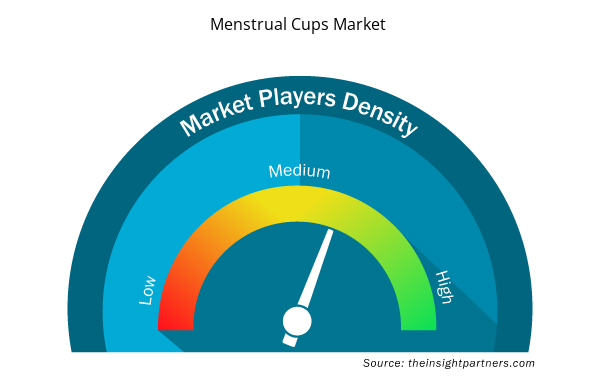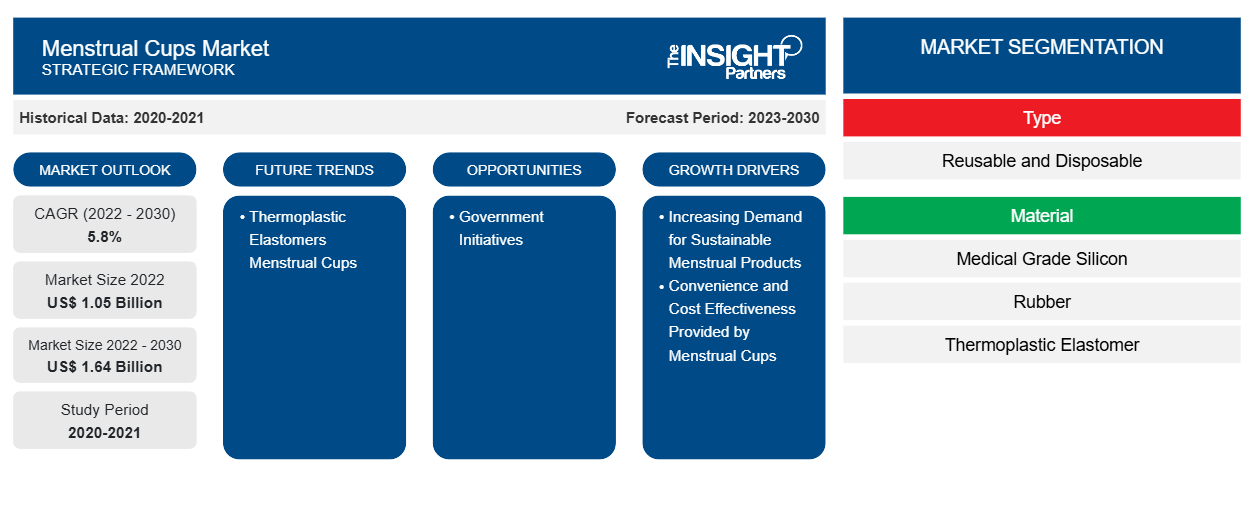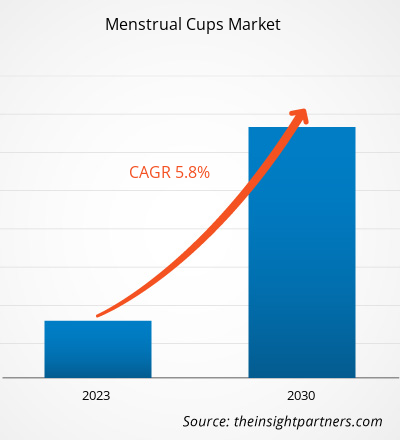[研究报告] 2022年月经杯市场规模价值10.5081亿美元,预计到2030年将达到16.4406亿美元;预计2022年至2030年的复合年增长率为5.8%。
市场洞察和分析师观点:
月经杯是一种可重复使用的钟形装置,专为月经期间的女性卫生而设计。这些杯子通常由医用级硅胶或橡胶制成,插入阴道以收集经血,而不是像传统的卫生棉条或卫生巾那样吸收经血。它们形成密封以防止泄漏,并且可以在需要清空之前佩戴长达 12 小时,为一次性产品提供了一种可持续且经济高效的替代品。与传统的月经卫生选择相比,月经杯因其环保效益和长期成本节约而越来越受欢迎。
增长动力和挑战:
对可持续月经产品的需求激增是推动月经杯市场的主要动力。近年来,全球转向可持续发展,消费者越来越意识到传统一次性月经产品对环境的影响。传统卫生巾和卫生棉条是塑料垃圾的重要来源,生产这些产品需要消耗资源和能源。每年,一名普通女性会丢弃近 150 公斤不可生物降解的垃圾。仅在印度,大约有 1.21 亿名女性和女孩每月平均使用 8 个一次性和不可堆肥的卫生巾,每月产生 10.21 亿片卫生巾垃圾,每年产生 123 亿片卫生巾垃圾,每年产生 113,000 公吨月经垃圾。由于月经杯可重复使用,人们开始寻求环保替代品,因此月经杯已成为首选。这种增强的环保意识促使消费者选择生态足迹最小的产品,从而推动了对月经杯的需求。
对可持续月经产品的需求增加与倡导女性健康和福祉的广泛运动密切相关。消费者越来越优先考虑那些不仅对环境有益而且对她们的健康安全有益的产品。月经杯通常由医用级硅胶、橡胶或热塑性弹性体制成,被认为是安全卫生的,可降低传统产品经常出现的刺激和过敏反应风险。月经杯与环境可持续性和女性健康的结合增加了它们的吸引力,成为其日益流行的驱动力。
定制此报告以满足您的需求
您可以免费定制任何报告,包括本报告的部分内容、国家级分析、Excel 数据包,以及为初创企业和大学提供优惠和折扣
- 获取此报告的关键市场趋势。这个免费样品将包括数据分析,从市场趋势到估计和预测。
各种倡导团体、非政府组织和政府举措都呼吁月经产品具有可持续性,旨在提高人们对一次性用品对环境影响的认识。宣传可持续月经的活动对于教育公众了解月经杯等可重复使用替代品的好处至关重要。可持续月经做法的知名度和认可度不断提高,有助于消费者态度发生积极转变,促进人们更多地接受和采用月经杯。
年轻一代消费者更注重环保选择,这也推动了对可持续月经产品的需求。尤其是千禧一代和 Z 世代,推动了包括个人护理在内的各个行业对可持续和道德产品的需求。这些人群的意识和偏好影响着市场趋势,而月经杯作为一种可持续和前瞻性的选择,与他们的价值观非常契合。随着这一人群的购买力不断增长,对月经杯的需求也将增长,从而巩固其作为领先的可持续月经产品在市场上的地位。
然而,消费者的认知和缺乏意识是月经杯市场发展的重大制约因素,影响了全球的采用率。由于缺乏全面的教育和宣传活动,许多人仍然不了解月经杯的好处。对该产品及其优势(例如成本效益、减少环境影响和延长佩戴时间)的不熟悉导致潜在用户不愿意从传统月经产品中转换。缺乏知识可能导致误解和抑制,阻碍月经杯作为一种可行且实用的替代品被更广泛地接受。
犹豫使用月经杯的原因通常是担心插入和取出月经杯的难度。一些消费者认为使用月经杯的学习曲线是一个障碍,认为这需要他们可能不具备的一定程度的技巧或舒适度。对月经杯的简单使用和潜在的健康益处缺乏了解是造成这种担忧的原因之一。要克服这些先入为主的观念和误解,需要有针对性的教育工作来强调月经杯的易用性、舒适性和积极的环境影响。通过解决这些问题并提高认识,市场可以努力消除误解,鼓励潜在用户对月经杯有更积极的看法。
报告细分和范围:
全球月经杯市场根据类型、材料、分销渠道和地理位置进行细分。根据类型,市场分为可重复使用和一次性。根据材料,市场分为医用级硅胶、橡胶和热塑性弹性体。根据分销渠道,市场分为超市和大卖场、专卖店、在线零售和其他。根据地理位置,全球月经杯市场大致分为北美、欧洲、亚太地区、中东和非洲以及南美和中美洲。
节段分析:
根据类型,月经杯市场分为可重复使用和一次性。可重复使用部分预计在 2022-2030 年期间实现最高复合年增长率。可重复使用的月经杯代表了月经卫生领域一场可持续且具有成本效益的革命。这些钟形杯通常由医用级硅胶、橡胶或热塑性弹性体制成,插入阴道以收集月经流量,而不是像传统卫生棉条或卫生巾那样吸收月经流量。材料的柔韧性和柔软性确保舒适性和易用性,可适应用户的身体结构。可重复使用的月经杯可佩戴长达 12 小时,提供无泄漏保护,让用户在管理经期方面拥有更大的灵活性。它们最显著的优势之一是对环境的影响,因为它们可以重复使用。这些杯子显著减少了产生的月经废物量,有助于形成环保的月经护理程序。此外,长期成本节省和无需定期购买一次性产品的便利性使得可重复使用的月经杯成为寻求可持续和实用的月经卫生替代品的用户越来越受欢迎的选择。
区域分析:
月经杯市场分为五个主要区域:北美、欧洲、亚太地区、南美和中美以及中东和非洲。2022 年,北美在全球月经杯市场占据主导地位,该地区的市场价值为 3.9541 亿美元。欧洲是第二大贡献者,占全球市场的 30% 以上。预计亚太地区在 2022-2030 年期间的复合年增长率将超过 5%。亚太地区对月经杯需求的激增可归因于多种因素,包括文化的不断转变、意识的不断提高以及女性健康的重要性日益增加。许多亚洲国家都在兴起打破月经禁忌的运动。
COVID-19 疫情影响:
由于制造工厂关闭、劳动力短缺、供应链中断和金融不稳定,COVID-19 疫情最初阻碍了全球月经杯市场的发展。COVID-19 疫情导致经济放缓,各行各业的运营中断,限制了月经杯的供应。此外,各种商店都关门了,这限制了月经杯的销售。尽管如此,随着 2021 年各国取消先前实施的限制,企业开始取得进展。此外,各国政府实施的 COVID-19 疫苗接种运动缓解了这种情况,导致全球商业活动增加。包括月经杯市场在内的多个市场在解除封锁和行动限制后均报告了增长。
月经杯市场区域洞察
Insight Partners 的分析师已详细解释了预测期内影响月经杯市场的区域趋势和因素。本节还讨论了北美、欧洲、亚太地区、中东和非洲以及南美和中美洲的月经杯市场细分和地理位置。

- 获取月经杯市场的区域特定数据
月经杯市场报告范围
| 报告属性 | 细节 |
|---|---|
| 2022 年市场规模 | 10.5亿美元 |
| 2030 年市场规模 | 16.4亿美元 |
| 全球复合年增长率(2022 - 2030 年) | 5.8% |
| 史料 | 2020-2021 |
| 预测期 | 2023-2030 |
| 涵盖的领域 | 按类型
|
| 覆盖地区和国家 | 北美
|
| 市场领导者和主要公司简介 |
|
月经杯市场参与者密度:了解其对业务动态的影响
月经杯市场正在快速增长,这得益于终端用户需求的不断增长,这些需求源于消费者偏好的不断变化、技术进步以及对产品优势的认识不断提高等因素。随着需求的增加,企业正在扩大其产品范围,进行创新以满足消费者的需求,并利用新兴趋势,从而进一步推动市场增长。
市场参与者密度是指在特定市场或行业内运营的企业或公司的分布情况。它表明相对于给定市场空间的规模或总市场价值,有多少竞争对手(市场参与者)存在于该市场空间中。
在月经杯市场运营的主要公司有:
- 尼克西特
- Lunette 全球
- Lena Cup 有限责任公司
- Diva国际公司
- 萨尔特
免责声明:上面列出的公司没有按照任何特定顺序排列。

- 获取月经杯市场顶级关键参与者的概述
竞争格局和重点公司:
Nixit、Lunette Global、Lena Cup LLC、Diva International Inc.、Saalt、Pixie Cup、June Cup、Cora、The Flex Company 和 Blossom Cup 是全球月经杯市场的知名参与者。
- 历史分析(2 年)、基准年、预测(7 年)及复合年增长率
- PEST 和 SWOT 分析
- 市场规模价值/数量 - 全球、区域、国家
- 行业和竞争格局
- Excel 数据集



Report Coverage
Revenue forecast, Company Analysis, Industry landscape, Growth factors, and Trends

Segment Covered
This text is related
to segments covered.

Regional Scope
North America, Europe, Asia Pacific, Middle East & Africa, South & Central America

Country Scope
This text is related
to country scope.
常见问题
The major players operating in the global menstrual cups market are Nixit, Lunette Global, Lena Cup LLC, Diva International Inc., Saalt, Pixie Cup, June Cup, Cora, The Flex Company, and Blossom Cup among others.
In 2022, North America region accounted for the largest share of the global menstrual cups market. The surge in demand for menstrual cups in North America can be attributed to several factors that reflect changing attitudes toward menstrual hygiene products, environmental concerns, and a need for more sustainable and cost-effective alternatives. Awareness and acceptance of menstrual cups as an eco-friendly option compared to traditional disposable products such as tampons and pads is growing across the region. Menstrual cups are reusable and long-lasting, reducing the environmental effects associated with the disposal of single-use menstrual products. Single-use menstrual products and plastic packaging of pads, tampons, and panty liners generate more than 200,000 metric ton of waste annually. According to the data from the Harvard Business School, the US recorded the disposal of 12 billion pads and 7 billion tampons in landfills, sewage lines, and oceans annually. The rising focus on sustainability and environmental consciousness has prompted many individuals to seek products that align with their values. Menstrual cups, made of medical-grade silicone or other safe materials, significantly reduce the amount of waste generated from menstrual products. This resonates with consumers increasingly making choices based on environmental considerations, leading to a shift away from disposable options.
The convenience and cost-effectiveness offered by menstrual cups play an essential role in driving the demand for this innovative menstrual hygiene product. One of the primary drivers is the long-lasting durability of menstrual cups. Unlike traditional disposable options such as pads and tampons, which must be replaced frequently, menstrual cups can be reused for several years. This durability reduces the frequency of purchases and minimizes the environmental impact associated with the disposal of single-use products. Consumers are increasingly drawn to the cost-effectiveness of menstrual cups, recognizing them as a one-time investment that leads to long-term savings.
The convenience provided by menstrual cups is also a significant factor influencing market growth. Menstrual cups can be worn for up to 12 hours, depending on the flow, before emptying and cleaning. This extended wear time makes them particularly appealing to women with active lifestyles, as they do not require as much attention and change as traditional products. The convenience of not having to carry multiple pads or tampons, especially in situations where restroom facilities may be limited, adds to the appeal of menstrual cups. This aspect resonates with individuals seeking a hassle-free and practical approach to managing their menstrual hygiene.
The use of thermoplastic elastomers (TPE) in manufacturing menstrual cups is emerging as a notable trend in the menstrual cups market. Manufacturers are increasingly choosing TPE over other materials due to its unique properties that make it well-suited for this application. TPE is a versatile material that combines the characteristics of thermoplastics and elastomers, providing flexibility, durability, and ease of processing. Its ability to be molded into various shapes and forms makes it an ideal choice for crafting menstrual cups comfortably inserted and adapted to the user's anatomy.
Manufacturers opt for TPE in menstrual cup production because of its hypoallergenic and biocompatible nature. TPE is known for being safe for prolonged skin contact, making it suitable for intimate and sensitive applications like menstrual hygiene products. This characteristic is crucial for ensuring the comfort and well-being of users, reducing the risk of irritation or adverse reactions. The hypoallergenic properties of TPE enhance the overall user experience, positioning menstrual cups made from this material as a reliable and health-conscious choice in the market.
Based on product type, the menstrual cups market is categorized into reusable and disposable. The reusable segment is expected to register the highest CAGR during 2022–2030. Reusable menstrual cups represent a sustainable and cost-effective revolution in menstrual hygiene. Typically crafted from medical-grade silicone, rubber, or thermoplastic elastomers, these bell-shaped cups are inserted into the vagina to collect menstrual flow rather than absorbing it like traditional tampons or pads. The flexibility and softness of the material ensure comfort and ease of use, adapting to the user's anatomy. Reusable menstrual cups can be worn for up to 12 hours, providing leak-free protection and allowing users greater flexibility in managing their periods. One of their most significant advantages is their environmental impact, as they can be reused. The cups significantly reduce the amount of menstrual waste produced, contributing to an eco-friendly menstrual care routine. In addition, the long-term cost savings and the convenience of not needing to purchase disposable products regularly make reusable menstrual cups an increasingly popular choice for users looking for sustainable and practical alternatives in menstrual hygiene.
Based on distribution channel, the menstrual cups market is segmented into supermarkets and hypermarkets, specialty stores, online retail, and others. The rise of online retail platforms has significantly impacted the distribution of menstrual cups, facilitated a global reach, and provided convenience for consumers. The discreet and private nature of online shopping particularly appeals to individuals who may feel uncomfortable purchasing menstrual products in physical stores. Online platforms offer a wide range of menstrual cup options and serve as educational hubs, providing information on usage, benefits, and environmental impact. The accessibility of online retail transcends geographical barriers, making menstrual cups available to users worldwide, including regions where these products may not be readily accessible through traditional retail channels.
Trends and growth analysis reports related to Consumer Goods : READ MORE..
The List of Companies - Menstrual Cups Market
- Nixit
- Lunette Global
- Lena Cup LLC
- Diva International Inc
- Saalt
- Pixie Cup
- June Cup
- Cora
- The Flex Company
- Blossom Cup
The Insight Partners performs research in 4 major stages: Data Collection & Secondary Research, Primary Research, Data Analysis and Data Triangulation & Final Review.
- Data Collection and Secondary Research:
As a market research and consulting firm operating from a decade, we have published and advised several client across the globe. First step for any study will start with an assessment of currently available data and insights from existing reports. Further, historical and current market information is collected from Investor Presentations, Annual Reports, SEC Filings, etc., and other information related to company’s performance and market positioning are gathered from Paid Databases (Factiva, Hoovers, and Reuters) and various other publications available in public domain.
Several associations trade associates, technical forums, institutes, societies and organization are accessed to gain technical as well as market related insights through their publications such as research papers, blogs and press releases related to the studies are referred to get cues about the market. Further, white papers, journals, magazines, and other news articles published in last 3 years are scrutinized and analyzed to understand the current market trends.
- Primary Research:
The primarily interview analysis comprise of data obtained from industry participants interview and answers to survey questions gathered by in-house primary team.
For primary research, interviews are conducted with industry experts/CEOs/Marketing Managers/VPs/Subject Matter Experts from both demand and supply side to get a 360-degree view of the market. The primary team conducts several interviews based on the complexity of the markets to understand the various market trends and dynamics which makes research more credible and precise.
A typical research interview fulfils the following functions:
- Provides first-hand information on the market size, market trends, growth trends, competitive landscape, and outlook
- Validates and strengthens in-house secondary research findings
- Develops the analysis team’s expertise and market understanding
Primary research involves email interactions and telephone interviews for each market, category, segment, and sub-segment across geographies. The participants who typically take part in such a process include, but are not limited to:
- Industry participants: VPs, business development managers, market intelligence managers and national sales managers
- Outside experts: Valuation experts, research analysts and key opinion leaders specializing in the electronics and semiconductor industry.
Below is the breakup of our primary respondents by company, designation, and region:

Once we receive the confirmation from primary research sources or primary respondents, we finalize the base year market estimation and forecast the data as per the macroeconomic and microeconomic factors assessed during data collection.
- Data Analysis:
Once data is validated through both secondary as well as primary respondents, we finalize the market estimations by hypothesis formulation and factor analysis at regional and country level.
- Macro-Economic Factor Analysis:
We analyse macroeconomic indicators such the gross domestic product (GDP), increase in the demand for goods and services across industries, technological advancement, regional economic growth, governmental policies, the influence of COVID-19, PEST analysis, and other aspects. This analysis aids in setting benchmarks for various nations/regions and approximating market splits. Additionally, the general trend of the aforementioned components aid in determining the market's development possibilities.
- Country Level Data:
Various factors that are especially aligned to the country are taken into account to determine the market size for a certain area and country, including the presence of vendors, such as headquarters and offices, the country's GDP, demand patterns, and industry growth. To comprehend the market dynamics for the nation, a number of growth variables, inhibitors, application areas, and current market trends are researched. The aforementioned elements aid in determining the country's overall market's growth potential.
- Company Profile:
The “Table of Contents” is formulated by listing and analyzing more than 25 - 30 companies operating in the market ecosystem across geographies. However, we profile only 10 companies as a standard practice in our syndicate reports. These 10 companies comprise leading, emerging, and regional players. Nonetheless, our analysis is not restricted to the 10 listed companies, we also analyze other companies present in the market to develop a holistic view and understand the prevailing trends. The “Company Profiles” section in the report covers key facts, business description, products & services, financial information, SWOT analysis, and key developments. The financial information presented is extracted from the annual reports and official documents of the publicly listed companies. Upon collecting the information for the sections of respective companies, we verify them via various primary sources and then compile the data in respective company profiles. The company level information helps us in deriving the base number as well as in forecasting the market size.
- Developing Base Number:
Aggregation of sales statistics (2020-2022) and macro-economic factor, and other secondary and primary research insights are utilized to arrive at base number and related market shares for 2022. The data gaps are identified in this step and relevant market data is analyzed, collected from paid primary interviews or databases. On finalizing the base year market size, forecasts are developed on the basis of macro-economic, industry and market growth factors and company level analysis.
- Data Triangulation and Final Review:
The market findings and base year market size calculations are validated from supply as well as demand side. Demand side validations are based on macro-economic factor analysis and benchmarks for respective regions and countries. In case of supply side validations, revenues of major companies are estimated (in case not available) based on industry benchmark, approximate number of employees, product portfolio, and primary interviews revenues are gathered. Further revenue from target product/service segment is assessed to avoid overshooting of market statistics. In case of heavy deviations between supply and demand side values, all thes steps are repeated to achieve synchronization.
We follow an iterative model, wherein we share our research findings with Subject Matter Experts (SME’s) and Key Opinion Leaders (KOLs) until consensus view of the market is not formulated – this model negates any drastic deviation in the opinions of experts. Only validated and universally acceptable research findings are quoted in our reports.
We have important check points that we use to validate our research findings – which we call – data triangulation, where we validate the information, we generate from secondary sources with primary interviews and then we re-validate with our internal data bases and Subject matter experts. This comprehensive model enables us to deliver high quality, reliable data in shortest possible time.


 获取此报告的免费样本
获取此报告的免费样本